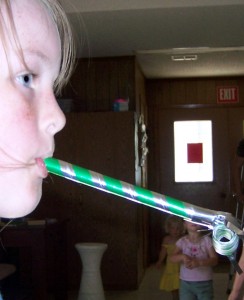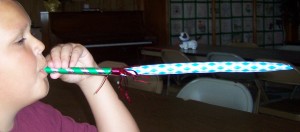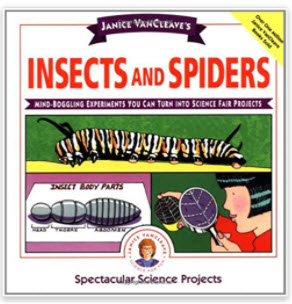Unlike caterpillars, adult butterflies do not have mouth parts that can cut and chew food. Instead, they exhibit a feeding behavior called necturing, which means to sip the nectar from flowers. Butterflies have a long feeding tube, called a proboscis. This tube remains coiled when not in use as shown in the photo (right).
When necturing, the proboscis is uncoiled and is a relatively straight so that it can be inserted deep into the tubes of flowers. This feeding tube acts much like a straw through which the butterfly sips the sugary liquid called nectar.
You can use a party blower to model a butterfly’s proboscis.
Discover for Yourself

When the butterflyis not necturing, its proboscis is coiled. This is represented by holding the party blower in your mouth so that its coils toward your face. Compare the photo of the coiled party blower (left) to the coiled proboscis of the butterfly (above).
When necturing, the butterfly’s proboscis is uncoiled. This is represented by blowing into the party blower so that it uncoils and is straight. (Photo below)

Biology for Every Kid
How is water transported through plant stems?What’s the effect of osmosis on a raisin?
What’s the best way to grow penicillin?
How are butterflies different from moths?
You will discover the answers in this book.
(Paid Link)
Biology for Every Kid
How is water transported through plant stems?What’s the effect of osmosis on a raisin?
What’s the best way to grow penicillin?
How are butterflies different from moths?
You will discover the answers in this book.
(Paid Link)


